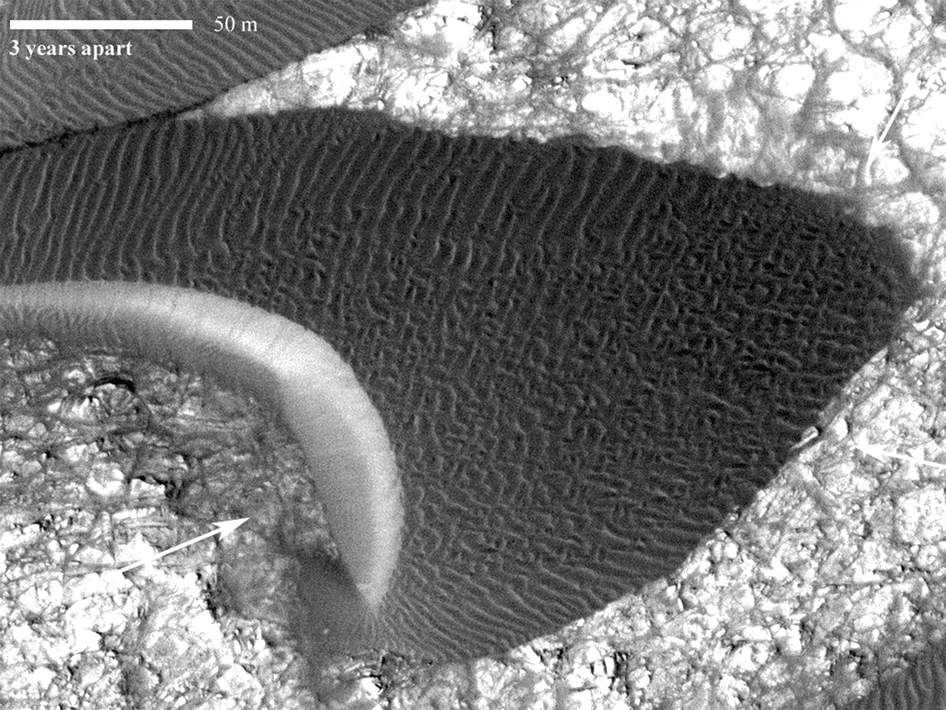Bruce Murray Space Image Library
Advancing dune in Nili Patera, Mars

The first image, in which the main body of the dune looks darker due to lighting effects, was taken on Oct. 13, 2007. It is one image product of HiRISE observation PSP_005684_1890. Other image products from the same observation are at http://hirise.lpl.arizona.edu/PSP_005684_1890. The "after" image was taken on May 11, 2010. Other image products from the same HiRISE observation are at http://hirise.lpl.arizona.edu/ESP_017762_1890. The images in the animation have been "orthorectified," that is, adjusted such that they appear as if viewed from directly overhead. They were then positionally tied together by registering fixed features on the bedrock seen in one image to the same features seen in the other.
The images are part of a study published by Nature on May 9, 2012, reporting movement of Martian sand dunes at about the same flux (volume per time) as movement of dunes in Antarctica on Earth.


 Explore Worlds
Explore Worlds Find Life
Find Life Defend Earth
Defend Earth

